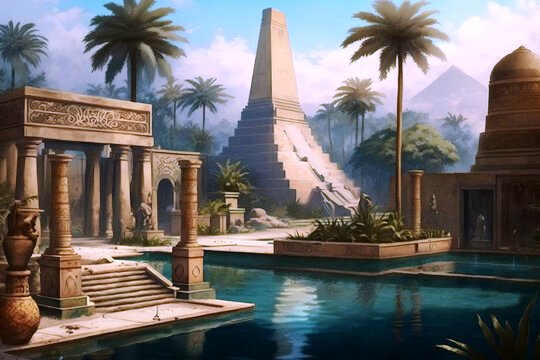Difference between revisions of "Abydos (ruin)"
Tao alexis (talk | contribs) (Created page with "right|560px|thumb| '''Abydos''', also ''Thinis'', was an ancient city in the emirate of Upper Egypt, near the city of Sohag, in the Ottoman Em...") |
Tao alexis (talk | contribs) |
||
| (5 intermediate revisions by the same user not shown) | |||
| Line 1: | Line 1: | ||
[[File:Abydos (ruin).jpg|right|560px|thumb|]] | [[File:Abydos (ruin).jpg|right|560px|thumb|]] | ||
| − | '''Abydos''', also ''Thinis'', was an ancient city in the emirate of [[Upper Egypt]], near the city of Sohag, in the [[Ottoman Empire]]. Important at the start of the Old Kingdom (c.3200 <small>BC</small>), it was the burial place of kings of the First and Second Dynasties. | + | '''Abydos''', also ''Thinis'', was an ancient city in the emirate of [[Upper Egypt]], near the city of Sohag, in the [[Ottoman Empire]]. Important at the start of the Old Kingdom (c.3200 <small>BC</small>), it was the burial place of kings of the First and Second Dynasties. Nothing significant remains of the city itself and of its famous sanctuary of [[Osiris]], as the ancient city was progressively covered by various later settlements, which were themselves destroyed by war, flooding or time. |
| − | + | Toward the end of the Old Kingdom, Osiris, the god of the underworld worshipped in the Delta region, was merged with the deity of the place; from then on it was the goal of all pious Egyptians to be represented either by an actual tomb, or cenotaph, or a simple monument, on the "Stairs of the God" near Osiris, who is reputedly buried there. Legend since the time of the Middle Kingdom (2052-1778 <small>BC</small>) has it one of the tombs of the earliest Pharoahs bears a passage down to the grave of Osiris. | |
| + | The Hyksos, who invaded Egypt shortly after 1700, left few identifiable remains. The temple of Seti I (1317-1301 <small>BC</small>) is purportedly buried beneath the extant villages of the area. What we know of the temple comes from Strabo in the 1st century <small>BC</small>, who described Abydos enthusiastically — calling the temple of Seti "Memnonium." Strabo adds that Abydos must have been a great city. | ||
| − | + | [[Category: Places in Egypt]][[Category: Ruins]][[Category: Don't Review until 2024]] | |
Latest revision as of 22:28, 2 November 2023
Abydos, also Thinis, was an ancient city in the emirate of Upper Egypt, near the city of Sohag, in the Ottoman Empire. Important at the start of the Old Kingdom (c.3200 BC), it was the burial place of kings of the First and Second Dynasties. Nothing significant remains of the city itself and of its famous sanctuary of Osiris, as the ancient city was progressively covered by various later settlements, which were themselves destroyed by war, flooding or time.
Toward the end of the Old Kingdom, Osiris, the god of the underworld worshipped in the Delta region, was merged with the deity of the place; from then on it was the goal of all pious Egyptians to be represented either by an actual tomb, or cenotaph, or a simple monument, on the "Stairs of the God" near Osiris, who is reputedly buried there. Legend since the time of the Middle Kingdom (2052-1778 BC) has it one of the tombs of the earliest Pharoahs bears a passage down to the grave of Osiris.
The Hyksos, who invaded Egypt shortly after 1700, left few identifiable remains. The temple of Seti I (1317-1301 BC) is purportedly buried beneath the extant villages of the area. What we know of the temple comes from Strabo in the 1st century BC, who described Abydos enthusiastically — calling the temple of Seti "Memnonium." Strabo adds that Abydos must have been a great city.
